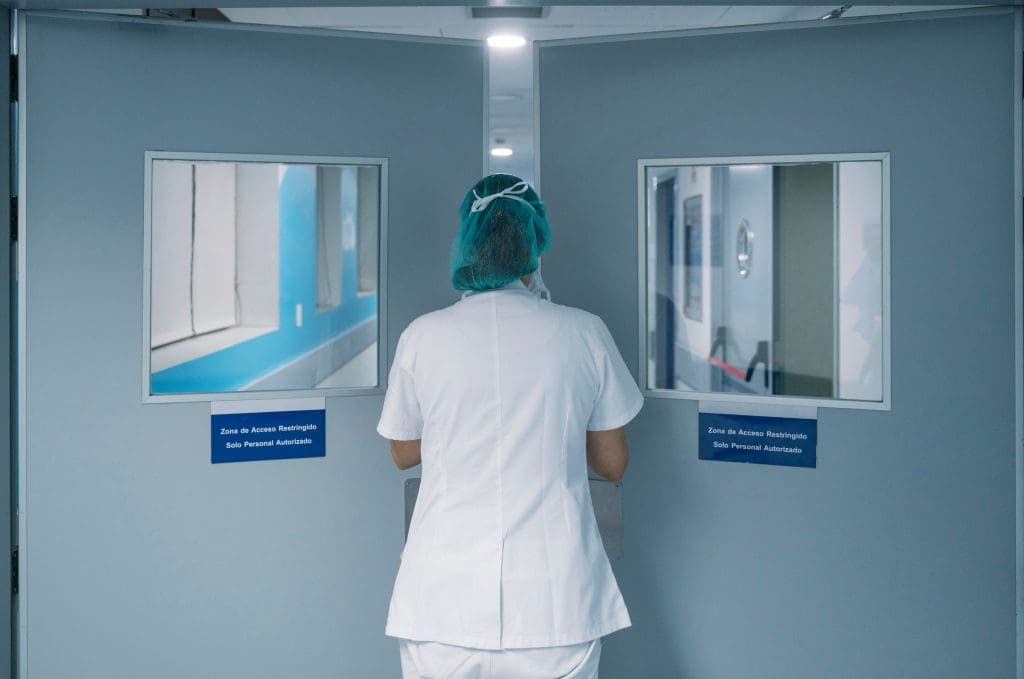Leaders are called on to set an example and influence staff. Under normal circumstances this can be challenging. Imagine arriving at work one morning to learn patients suspected to have a novel virus no one has ever treated are being admitted to the unit you lead. No amount of communication or preparation can allay your team’s fear and anxiety of the unknown. Or can it? As the leader of a post-surgical unit in an urban, academic medical center, communication proved vital during the COVID-19 pandemic.
The team was about to embark on a journey never traveled in nursing. Before the pandemic, nurses cared for surgical specialty patients such as orthopedic, head and neck, and urology. Information felt as if it was coming at us minute by minute and from all directions, including the New York Department of Health, Centers for Disease Control and Prevention, World Health Organization, and my own hospital leadership. It was up to me to ensure these fast-paced messages were communicated to the team as often as necessary. Known as a straight forward, no nonsense communicator with eyes that cannot lie, my transformational leadership skills were about to be tested.
Leading through trust
Transformational leaders are generally strong in their ability to adapt to various situations, while also inspiring their team to embrace changes and be partners with an organization. Working in a hospital during a pandemic would require clear, effective communication. I have always been able to communicate well with my staff. They are accustomed to my down-to-earth, transparent delivery. Could I be the role model needed to inspire, motivate, and guide my team to recognize their own strengths and weaknesses? Was my “normal” communication style good enough?
The rapidly changing information related to a virus none of us were prepared to fight required a compassionate, yet factual delivery. I could not let my fear of the unknown dictate my words and actions. Staying focused while conveying necessary information and providing the support the team needed from leadership was initially a challenge. My mind was always racing. I had a “to do” list of tasks that needed to get done. I didn’t have much time to sit and talk, and the staff didn’t have time to sit and listen.
As I adapted, the team adapted. The staff had many questions, but I didn’t always have the answers. My honesty was the bridge to an increased level of trust, and my availability and presence on all shifts was essential. Just as there was a shift in the staffing paradigm, leadership schedules shifted as well. Monday through Friday, 8 AM to 4:30 PM was no longer adequate. Working with the night staff and providing them first-hand information demonstrated to the team I was all in. We were going to navigate this crisis together.
Evolving communication style
As the days and weeks of the crisis wore on, I recognized a change in how I communicated with the team. The lines of communication were always open prior to this crisis; however, now more than ever my team needed me. The exchange of information was dynamic. Listening to the fears and anger generated by the changed landscape of the clinical care required not only opened my ears, but my mind as well. Recognizing subtle intonations in their voices and acknowledging the roller coaster of emotions, I encouraged everyone to ask more questions and speak unbridled. Staff let down their guard and shared their vulnerability. In turn, I responded in a clear, calm manner lessening the stress the staff was experiencing. Leadership and professional governance promoted an environment of support and encouragement. This was always the premise of daily huddles and impromptu briefings; however, the crisis brought them to a new level.
Power of pivot
During the crisis, the word “pivot” became part of the unit lexicon. The unit pivoted several times to adapt to the different phases of hospitalization a patient experienced while recovering from COVID-19. As the patients diagnosed with the virus were surging in our hospital, we became a strictly COVID-19-positive unit. No more hip or knee replacements. No more laryngectomies or prostatectomies. All elective surgeries were cancelled to accommodate the need for beds for these very sick patients. The team responded with resilience as they quickly adjusted to the change in patient population. They became warriors.
Personal protective equipment (PPE) was at the forefront of everyone’s mind. At the onset, proper PPE was not enough. The team had gowns, gloves, masks (N95 and surgical), and face shields. We followed all the PPE guidelines; however, due to overwhelming fear, staff wanted more: shoe coverings, head coverings, full body jumpsuits. Instructions for proper donning and doffing of PPE were provided to all staff. Through these instruction sessions the staff learned that too much PPE could, in fact, be a conduit for cross contamination. The infection prevention and control specialist for the unit was a constant partner as we prepared for and continued to care for the surge of patients requiring isolation. Once overcome with fear and anxiety, the team transformed into a cohesive clinical force unlike any other team I’ve lead. Already confident in the care they provided, they embraced the challenges of caring for these very sick patients.
Critical thinking was essential. With the rapidly changing condition of the patients, nurses developed foresight and improved communication with other providers and departments. They knew when and who to call for assistance at the appropriate time. Their decision making effectively meant a patient was transferred to a higher level of care when necessary.
As the number of admitted COVID-19-positive patients began to decrease throughout the organization, the unit was summoned to pivot once again. As a post-surgical unit familiar with caring for head and neck surgical patients, the unit was designated as a transition unit for those patient who underwent a tracheostomy procedure due to a prolonged need for mechanical ventilation. With clear communication and proper preparation, the team embraced this transition. Caring for these transitional patients was no easy feat, and staff were ready. Some patients had already been hospitalized for several weeks and were weak and deconditioned. My goal was to ensure that appropriate supplies and equipment were readily available.
Power of teamwork
Communication identified educational opportunities. With the assistance of the nurse educator, infection prevention and control specialists, and physicians, there was shared teaching/learning about tracheostomy care, pulmonary toileting, updated isolation procedures, and capping trials, which lead to de-cannulation. The resiliency and flexibility demonstrated was unmatched.
Rather than transfer patients to outside acute rehabilitation centers, hospital leaders chose to keep these transitioning patients in the hospital, on our unit. Physical therapists, occupational therapists, speech and language pathologists, and physical medicine and rehabilitation physicians were working as one interdisciplinary team. Given the necessary resources, the team felt prepared to care for any type of patient. Their mantra became, “Bring it on. Let’s do this!” Together they advocated for patients and prepared them for discharge post COVID-19 infection. No other unit within the organization morphed and overcame as many challenges as this one.
Unknown as opportunity
After 4 months and four patient population changes, the unit is settling into a new normal. Change is inevitable and not always easy. Leadership and communication propelled this team forward with a positive outlook. The team didn’t allow the unknown to define them. They embraced the unknown as an opportunity with the unintended outcome of professional and personal growth. They are motivated to care for their patients and each other. As their leader with her own identified opportunities for professional growth, I was able to guide the team through the unknown.
Once a driving force, fear and anxiety have been replaced with a sense of support, trust, and well-being. The lessons learned are safely tucked away. Will there be another wave of patients with COVID-19 or another pivot for the unit? This is the new unknown and the unit will be ready when it happens.
Nadine Couch is patient care director at New York Presbyterian Columbia University Irving Medical Center in New York City.



















1 Comment.
Wonderful article. As I read it the old TV show “M.A.S.H.” came to mind. Being in the middle of the line of fire yet forging through never knowing what’s coming. Things never seen before yet dealing with ‘head on’ as if this was a norm. And yet the team camaraderie and leadership. Proud of you all! Thank you!.